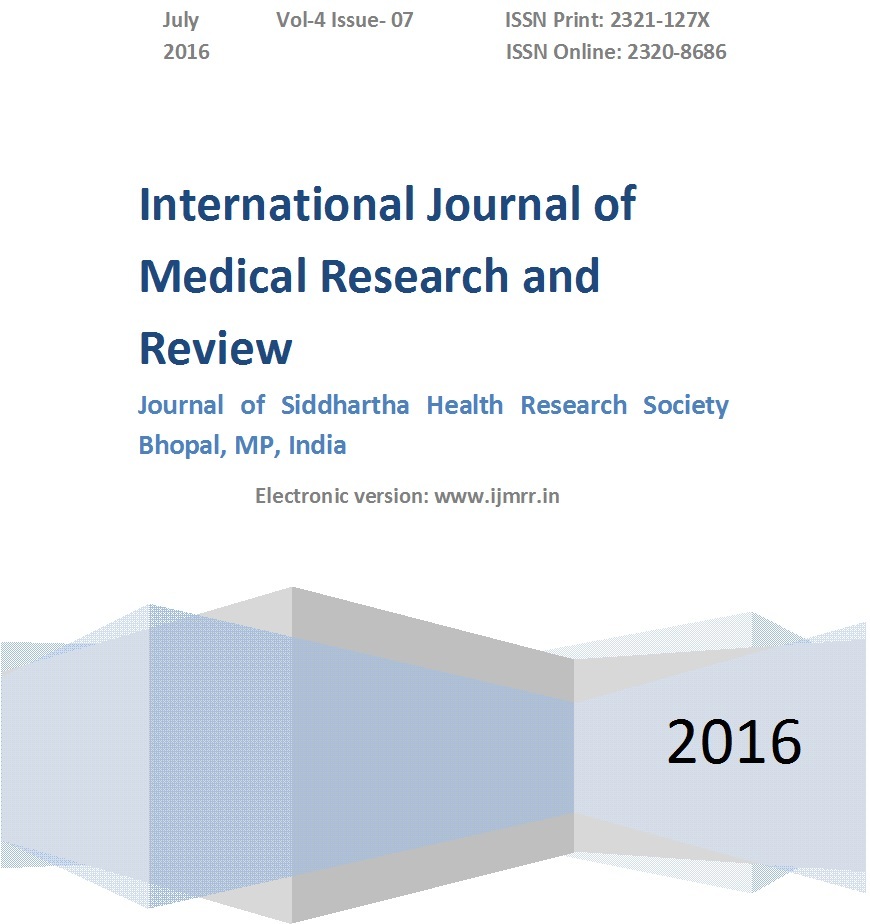Retrospective analysis of poisoning cases admitted in a tertiary care hospital in North Eastern UP, India
Abstract
Aims: Poisoning is a medical emergency associated with significant morbidity and mortality. This study was done to analyse the pattern of poisoning cases coming to our tertiary care centre located in the north eastern part of U.P., India. It is important to know the pattern of poisoning in a region so as to take proper actions for prevention and management of the cases.
Methods: This was a retrospective hospital record based study of poisoning patients who were admitted to our tertiary care hospital between July, 2014 to December 2015. Data of total 140 cases were analyzed for demography, type of poisoning and outcome and results were analyzed statistically.
Results: Pesticides dominated the picture amongst the rural population while urban people consumed drugs and household agents. The overall mortality rate was 4.28%. Most of the deaths were in Aluminium phosphide cases (66.66%) followed by paraquat and organochlorine.
Conclusion: In adults poisoning is mostly suicidal while children accidentally ingest substances. Pesticides, chemicals and drugs available in house are mostly used. Rural people resort to pesticides while urban population takes household articles or drugs for self harm. Mortality depends on the type of poison, amount consumed and the time lapsed in reaching a health care facility as well as how equipped is the health care facility to tackle the poisoning cases.
Downloads
References
Thundiyil JG, Stober J, Besbelli N, Pronczuk J. Acute pesticide poisoning: a proposed classification tool. Bull World Health Organ. 2008 Mar;86(3):205-9.doi: https://doi.org/10.2471/blt.08.041814.
McClure GM. Suicide in children and adolescents in England and Wales 1970-1998. Br J Psychiatry. 2001 May;178:469-74.doi: https://doi.org/10.1192/bjp.178.5.469.
Marecek J. Culture, gender, and suicidal behavior in Sri Lanka. Suicide Life Threat Behav. 1998 Spring;28(1):69-81.
Srinivas Rao Ch, Venkateswarlu V, Surender T, Eddleston M, Buckley NA. Pesticide poisoning in south India: opportunities for prevention and improved medical management. Trop Med Int Health. 2005 Jun;10(6):581-8.doi: https://dx.doi.org/10.1111%2Fj.1365-3156.2005.01412.x.
Dash SK, Aluri SR, Mohanty MK, Patnaik KK, Mohanty S. Sociodemographic profile of poisoning cases. JIAFM 2005;27(3):133-8.http://medind.nic.in/jal/t05/i3/jalt05i3p133.pdf.
Singh O, Javeri Y, Juneja D, Gupta M, Singh G, Dang R. Profile and outcome of patients with acute toxicity admitted in intensive care unit: Experiences from a major corporate hospital in urban India. Indian J Anaesth. 2011 Jul;55(4):370-4. doi: http://www.ijaweb.org/text.asp?2011/55/4/370/84860.
Gargi J, Rai H, Chanana A, Rai G, Sharma G, Bagga IJ. Current trend of poisoning--a hospital profile. J Indian Med Assoc. 2006 Feb;104(2):72-3, 94.
Sheetu MKJ, Naik JD, Thakur MS, Langare SD, Pandey VO. Retrospective Analysis of poisoning cases admitted in a Tertiary Care Hospital. IJRTSAT 2014;10(2):365-8.https://statperson.com/Journal/ScienceAndTechnology/Article/Volume10Issue2/10_2_49.pdf.
Ramesha KN, Rao KB, Kumar GS. Pattern and outcome of acute poisoning cases in a tertiary care hospital in Karnataka, India. Indian J Crit Care Med. 2009 Jul-Sep;13(3):152-5. doi: https://dx.doi.org/10.4103%2F0972-5229.58541.
Anthony L ,Kulkarni C. Patterns of poisoning and drug overdose and their outcome among in-patients admitted to the emergency medicine department of a tertiary care hospital. Indian J Crit Care Med 2012;16(3):130-5.doi: https://doi.org/10.4103/0972-5229.102070.
S Alankar. A review on Peppermint oil. Asian Journal of Pharmaceutical and Clinical Research 2009;2(2):27-33. https://innovareacademics.in/journal/ajpcr/Vol2Issue2/187.pdf.
Nath SS, Pandey C, Roy D. A near fatal case of high dose peppermint oil ingestion- Lessons learnt. Indian J Anaesth. 2012 Nov;56(6):582-4. doi: http://www.ijaweb.org/text.asp?2012/56/6/582/104585.
Kulkarni ML, Sreekar H, Keshavamurthy KS, Shenoy N. Jatropha curcas - poisoning. Indian J Pediatr. 2005 Jan;72(1):75-6.doi: https://doi.org/10.1007/BF02760586.
Koltin D, Uziel Y, Schneidermann D, Kotzki S, Wolach B, Fainmesser P. A case of Jatropha multifida poisoning resembling organophosphate intoxication. Clin Toxicol (Phila). 2006;44(3):337-8.doi: https://doi.org/10.1080/15563650600584584.
Konradsen F, van der Hoek W, Cole DC, Hutchinson G, Daisley H, Singh S, Eddleston M. Reducing acute poisoning in developing countries--options for restricting the availability of pesticides. Toxicology. 2003 Nov 5;192(2-3):249-61.doi: https://doi.org/10.1016/s0300-483x(03)00339-1.
FAO.International Code of Conduct on the Distribution and Use of Pesticides. FAO, Rome2002. http://www.fao.org/fileadmin/templates/agphome/documents/Pests_Pesticides/Code/code.pdf.



 OAI - Open Archives Initiative
OAI - Open Archives Initiative


